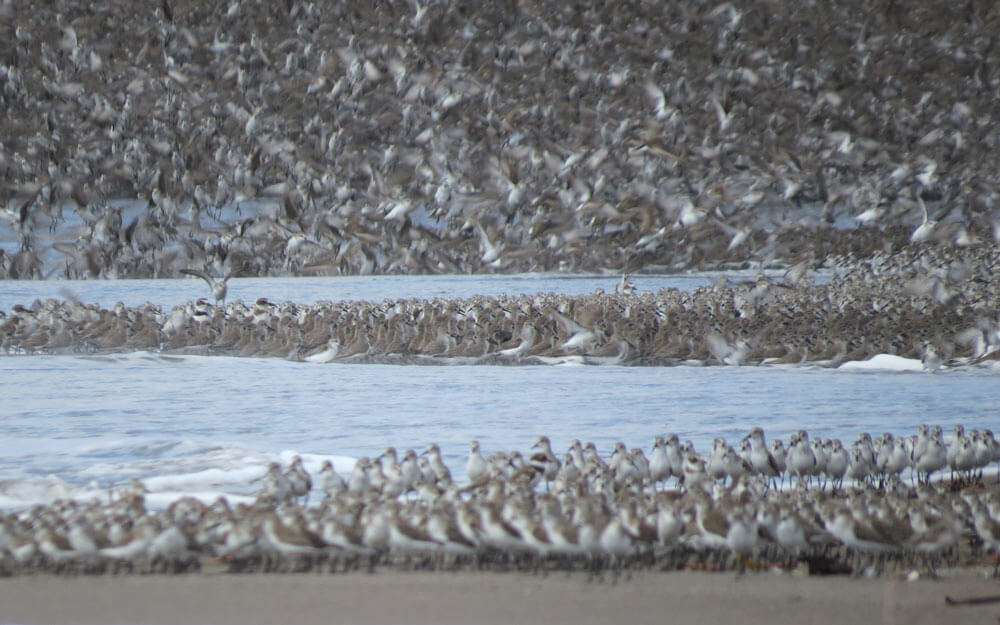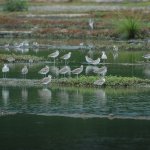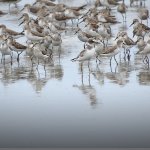Punta Condega-El Jicarito System
Location
Honduras, Choluteca
Category
Regional
Basis for Designation
1% of the population of Wilson’s Plover and Double-striped Thick-knee
Significant Species
Wilson’s Plover
Double-striped Thick-knee
Size
45,393 ha (112,168.54 acres)
Date Designated
February 2023
Site Owner
National Institute of Forest Conservation and Development, Protected Areas and Wildlife (ICF/SERNA)
Site Partners
National Institute of Forest Conservation and Development, Protected Areas and Wildlife (ICF)
Grupo Granjas Marinas
Contact
National Institute of Forest Conservation and Development, Protected Areas and Wildlife (ICF/SERNA)
Overview
The Punta Condega-Jicarito system is located in the southern part of Honduras, in the Gulf of Fonseca. It includes the Habitat Management for Species Protected Areas, El Jicarito and Las Iguanas-Punta Condega. It also includes shrimp production areas, including four shrimp farms belonging to the Granjas Marinas Group. The area is owned and managed by the National Institute of Forest Conservation (ICF) and companies that have received a 20-year concession contract from the State.
The site qualifies as a WHSRN site under the criteria of hosting 1% of Wilson’s Plover population (Charadrius wilsonia) and the Double-striped Thick-knee (Burhinus bistriatus). The area includes intertidal mudflats, sandy beaches, and remnants of natural salt marshes. More than 100 individuals of American Oystercatchers (Haematopus palliatus) have been recorded, some banded in the Atlantic coast of the United States. There are also 12,000 Western Sandpipers (Calidris mauri) and 5,000 Semipalmated Sandpipers (C. pusilla) resting at the site.
More than 20,000 birds of various species of the family Scolopacidae and Recurvirostridae have been registered.

Photo by John van Dort
In addition, counts of more than 20,000 birds of various species of the family Scolopacidae and Recurvirostridae have been registered. The majority of the species found here include the Western Sandpiper, Semipalmated Sandpiper, Least sandpiper (C. minutilla), Stilt Sandpiper (C. himantopus), Black-necked stilt (Himantopus mexicanus), and Whimbrel (Numenius phaeopus).
The proposed site includes protected areas and productive areas. The protected areas are part of the Subsystem of Natural Protected Areas of the Southern Zone of Honduras (ZAPZsurH) likewise the protected areas have a management plan approved under ministerial agreement 021-2015:
- El Jicarito Species Habitat Management Area by Species covers an area of 6,922.36 hectares.
- The Las Iguanas and Punta Condega Species Habitat Management Area, covers an area of 4,169.22 hectares.
The area is part of the RAMSAR Site 1000, a nomination made in 1999 by the RAMSAR Convention, for being a wetland of great importance that serves as a habitat for many species of flora and fauna. The area includes marine-coastal ecosystems that include a system of wetlands with diverse characteristics and classification from areas of intertidal forested wetlands (mangrove), winter lagoons, estuaries, islands, islets, beaches, and dry subtropical forest.
The nomination of this new site was possible thanks to the commitment and coordinated work between the National Institute of Forest Conservation (ICF) and Aves Honduras (ASHO) with support from the WHSRN Executive Office.








